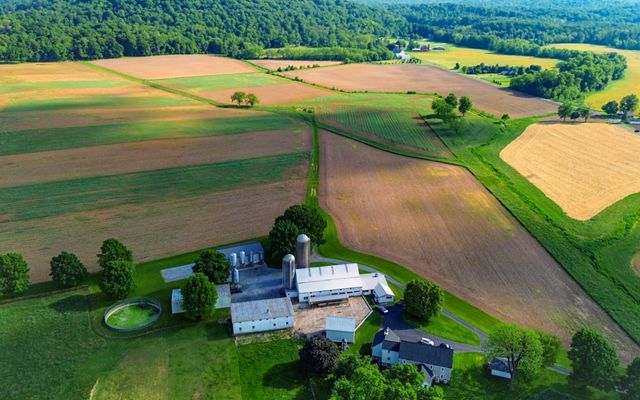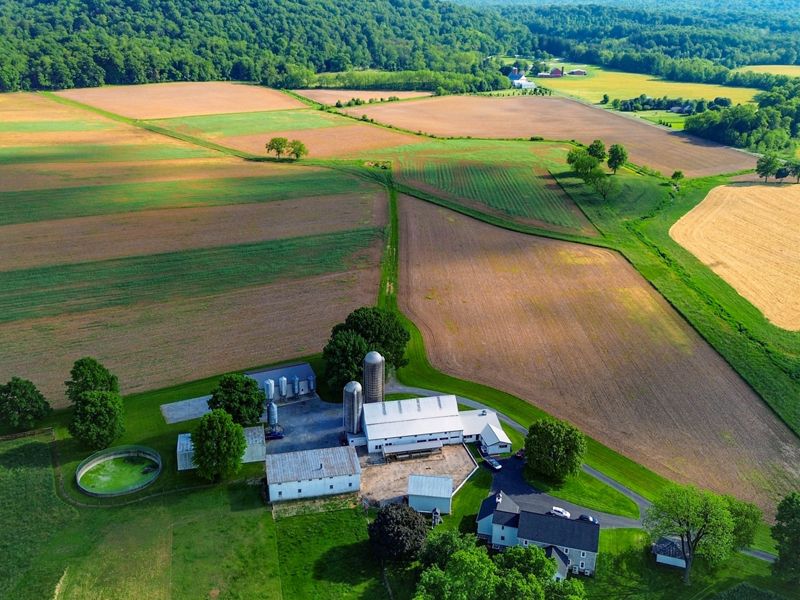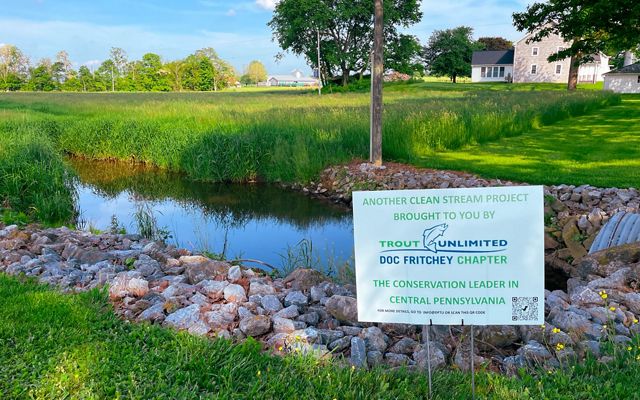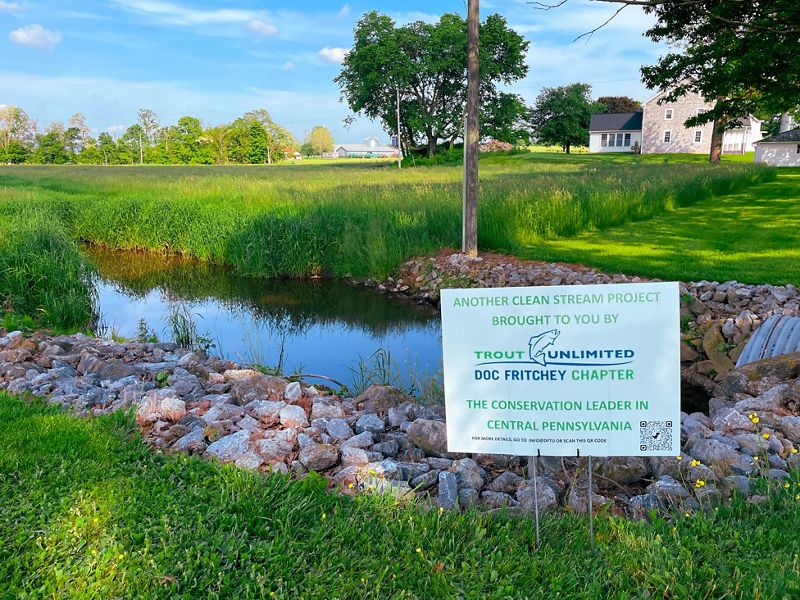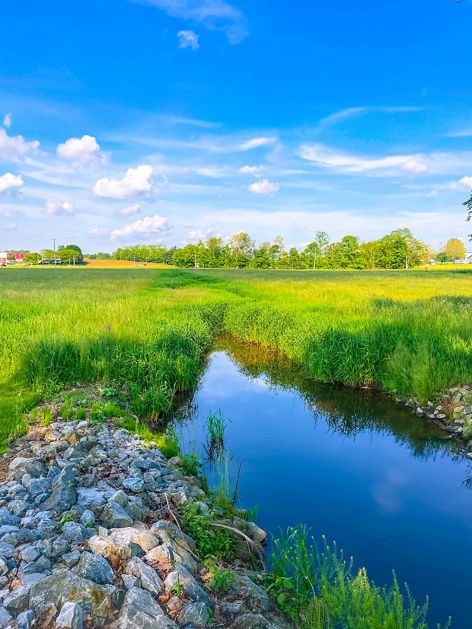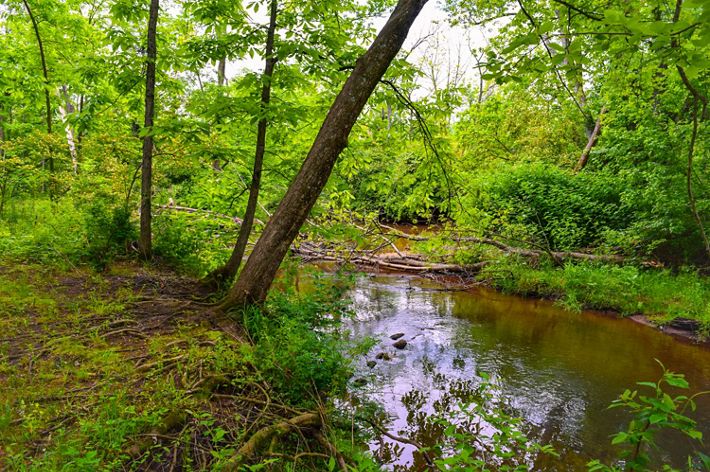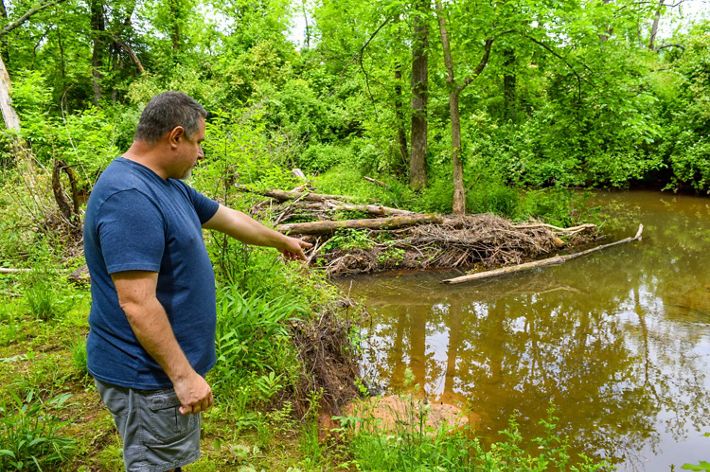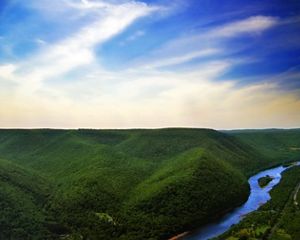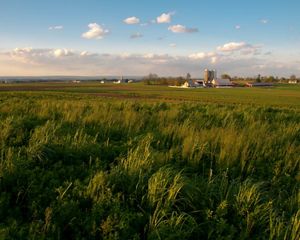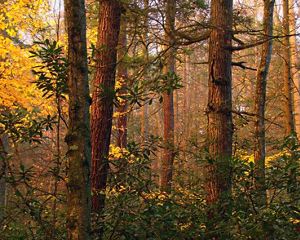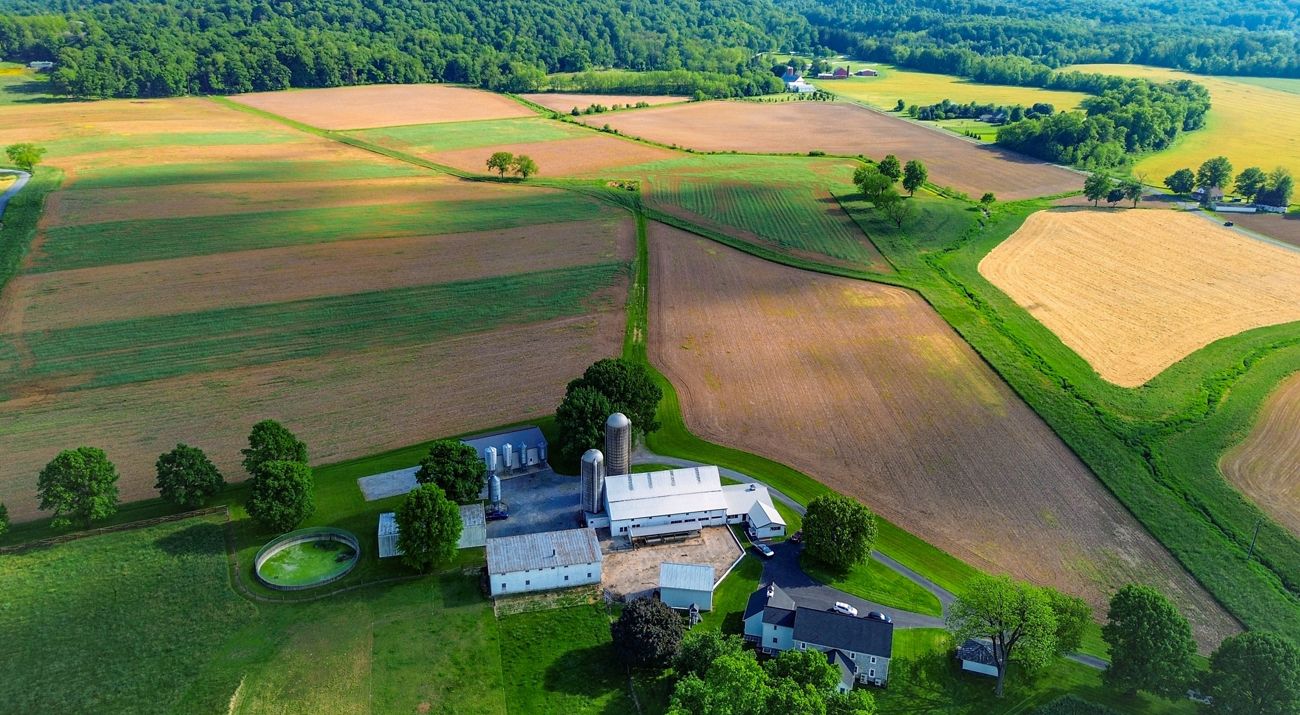
Wetland, Floodplain and Stream Restoration Aids Pennsylvania Farmers
The Nature Conservancy and its partners are applying science-based conservation practices in the Chesapeake Bay watershed.
For Mitchel and Ashley Zimmerman, farming in Lancaster County, Pennsylvania, is a generational tradition. Their 233-year-old farmhouse in the headwaters of the Hammer Creek watershed has been in Ashley’s family for almost a century, and while a lot has changed over that time, the couple still primarily raises corn and soybeans along with a few cattle and two donkeys.
TNC helps protect the lands and waters upon which all life depends. In the northeast United States, we support resilient and connected freshwater ecosystems throughout the Appalachians and the Chesapeake Bay watershed while reducing climate change-exacerbated threats to human communities.
In recent years, however, Mitchel has grown increasingly concerned about heavy erosion of the stream running through the property. Periodic flooding in his fields harms his productivity and his bottom line.
Like much of Pennsylvania’s historic farmland, the Upper Cocalico basin is facing a floodplain challenge. When natural wetlands are drained or altered over time, the ground loses a critical “sponge,” leaving stream banks vulnerable to deterioration from heavy rainfall. What’s more, nutrients applied to fields have less resistance when running off into local waterways, negatively impacting water quality all the way downstream to the Chesapeake Bay.
At an informational session about stream maintenance in 2022, Mitchel met Jon Niles, TNC Pennsylvania’s Stream and Wetland Restoration Specialist. Jon works with partners, including the Doc Fritchey Chapter of Trout Unlimited and the Cocalico Creek Watershed Association, to aid landowners in designing voluntary stream improvements that provide both environmental and economic benefits. Every property is unique, and every landowner’s needs are different, so the plans are always customized to suit each farm.
“I welcomed Jon’s expertise on how we can make it better, how we can control erosion,’” Mitchel says. “We walked the property and identified a bunch of things that might be able to keep the fields drier so that we can be more profitable as farmers.”

Stay Up to Date on Stream & Floodplain Restoration
Receive the latest updates and conservation news from Pennsylvania.
In late 2024, Jon and the project team finalized a design for Hammer Creek Estates, which included adding a 2.4-acre wetland restoration area, a 1,000-foot-long floodplain and stream restoration along with additional riparian buffers on the banks.
The plan also helped improve pastures and cropland by implementing a plan for rotational grazing. With funding secured through both public and private grants, this restoration project is expected to be completed in late 2025.
“I love that TNC is a science-based conservation organization working to advance the best practices in a global, regional and local boots-on-the-ground model,” Jon says about his work. “The ability to contribute to wetland restoration and wildlife habitat in a way that helps farmers is the most rewarding part.”
Restoring this historic stream and floodplain will directly benefit water quality in the Upper Hammer Basin and the Chesapeake Bay watershed. But for Mitchel and his family, it also means a brighter future for their land.
“Five, ten or fifteen years down the road, when everything’s starting to grow up and there’s shade, I’m imagining this as a place where I can take the family down to the creek to go fishing,” Mitchel says.
Mitchel hopes that more farmers will consider working alongside TNC and its partners on similar stream and wetland restoration efforts for their properties.
Quote: Mitchel Zimmerman

I view this as future-proofing. If you take care of the land, it will take care of you. What we do here will affect our neighbors downstream, and if we work together as a community, it’s going to benefit everyone.
Like Mitchel, each landowner in the Upper Hammer watershed has slightly different needs for their property. To improve land and water quality, TNC collaborates with non-profits, public agencies and private businesses to craft customized restoration projects. Each partner brings unique perspectives, experiences, relationships and expertise to produce the best results.
Our Partners:
Trout Unlimited (Doc Fritchey Chapter), Lebanon County Conservation District, Lancaster County Conservation District, Lancaster Farmland Trust, Cocalico Creek Watershed Association, Lancaster Clean Water Partners, Pennsylvania Department of Environmental Protection, Land Studies, and Ecosystem Planning & Restoration.
In northern Lancaster County, Caleb Swarr‘s property backs up to Little Cocalico Creek. Although much of the property is wooded, Caleb has witnessed continued erosion of the stream banks since he moved there in 2021.
“Just in the time I have lived here, I’ve noticed marked stream bank erosion and widening of Little Cocalico Creek due to flooding and lack of adequate riparian buffer and an effective floodplain,” he says. “I hope that through this restoration project, my land can regain some of the natural beauty and productivity it once held and see an increase in native plant species.”
Both Little Cocalico Creek and nearby Fry’s Run have been impacted by legacy sediment deposition and channelization, which creates steep chutes in the stream channel and accelerates erosion. Stream banks have been observed to be up to 5 feet high in some locations, with many trees undermined by high flows.
By restoring 1,300 feet of stream and five acres of wetlands, this project will help improve water quality by reducing bank and bed erosion and re-establishing a functional and resilient floodplain complex that stores sediment and high water flow. Meanwhile, the surrounding land will be able to assimilate nutrients and support groundwater flow to the stream during periods of drought.
The Little Cocalico Creek project will also help remove invasive species and re-establish native plant and wetland species, leading to improved wildlife habitat. The floodplain will be re-seeded with native grass, sedges and rushes that are tolerant of a variety of moisture conditions, consistent with seasonal conditions. Finally, the floodplain will become a wet meadow system and the mature upland hardwood trees will create a mosaic of connected and diverse habitats.
Overall, TNC’s restoration work in Lancaster and Lebanon counties will directly benefit the lives and livelihoods of the farmers and growers who call this area home while ensuring a healthier aquatic environment for fish, birds and plants throughout the Chesapeake Bay watershed.
Quote: Jon Niles
It has been great to work with landowners here as they are passionate about nature and want to help restore these streams to their natural state.
“I can’t say enough about our local partners and how important they are to making this restoration happen. Their passion, dedication and commitment to healthy ecosystems will help us ensure a more resilient freshwater future for this region", says Jon.
Your Gift Helps Make Our Work Possible.
The Chesapeake Bay is the largest estuary in North America and third largest in the world, supporting over 3,600 species of plants and animals. Water quality is degraded by elevated nutrients and sediment from the 64,000-square-mile watershed that includes six states and Washington D.C. TNC’s work helps restore clean water and improve aquatic habitat through our work with farmers in agriculture, mitigating stormwater flooding, restoring wetlands and conserving oyster reefs.
Your gift helps TNC continue to improve water quality and create transformative partnerships that will protect the Chesapeake Bay watershed, conserve biodiversity and increase resiliency in the face of a changing climate. Your support makes critical projects like this one possible, and we are sincerely grateful. Thank you.
Learn More About How You Can Help:
To learn more about helping us implement this critical work, please contact us at PADE@tnc.org or 610-834-1323.
